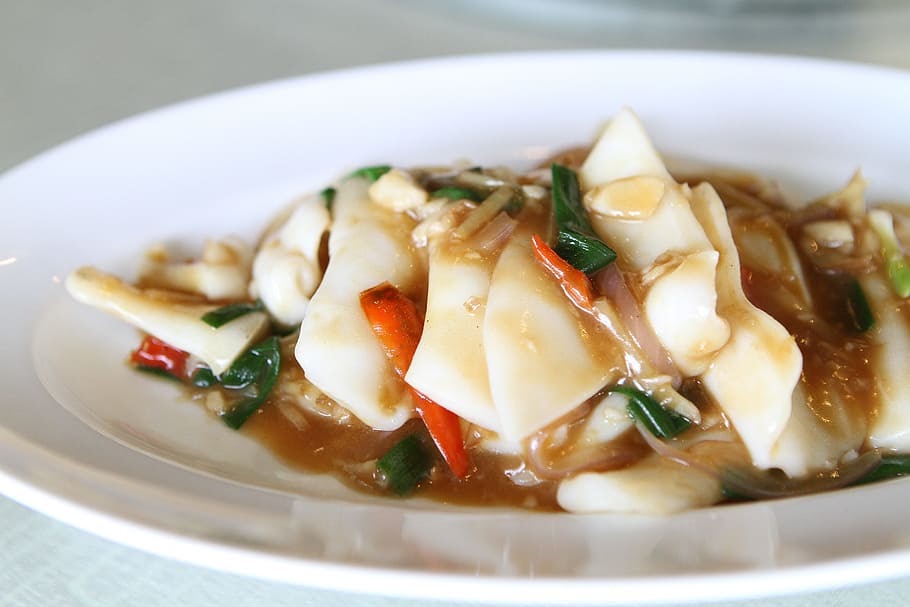I want to share with you one of my new favorite foods. While it might seem a bit exotic or difficult to work with, it is anything but! In fact, based on the benefits, I think it should be an essential part of your diet moving forward. I’m talking about squid!
In some circles, it’s even being called the new chicken. Let me tell you a bit more about why I love it, and how it can benefit your health, right now.
Squid & My Diet
Squid has always been a part of my diet.
I’ve eaten it, here and there, for years now. But, I never really thought much of it one way or the other. In fact, most of the time I only ever saw it in restaurants as calamari – essentially seasoned, fried, and served.
As you may have guessed, fried food has never been a staple of my diet. So, squid never really factored into what I ate because I rarely saw it outside this format. That all changed, though, as I was doing work for one of my books.
A Squid Revelation
In doing some research, I learned about the importance of modulating iodine.
This included being at a strategic level of iodine, and understanding the role that iodine plays in the health of your thyroid (and what you can do to optimize it). I have talked exclusively about iodine before and its connection to your thyroid (Read: Iodine and Thyroid Disease).
I also hated the idea of cutting out the whole category of seafood. That’s because there is such strong evidence of seafood being a positive thing for our health. So, I really wanted to find versions that would benefit our health and our thyroid.
In my eyes, the ideal seafood needed to be:
- Tasty (of course!)
- Easy to work with
- Nutritious
- Cost effective
- Sustainable
- Lack crazy amounts of iodine
Bottom Line: Taking all those filters and putting them into place, squid did exceptionally well. Given that information, I really wanted to dive in and learn more about it.
The Value of Squid
Once I learned how beneficial squid could be, the next thing I needed to do was learn how to cook with it!

That’s because I not only wanted to recommend squid as a part of one’s diet, but I wanted to be able to confidently work it into everyday recipes.
So, I did just that. What I found was just how easy it is to cook with squid. You can even find “squid steaks,” in most supermarkets, which are frozen, relatively inexpensive, and easy to use.
Key Insight: But, are the frozen versions okay to work with? Definitely! The frozen versions are typically as good, or better, as working with fresh squid.
While it might be easy enough to find squid steaks in your local grocery store, you can also find “tubes” as well as the whole squid. The latter are easy to clean and work with, but the steaks are really the simplest way to immediately start cooking with squid.

The Benefits of Squid
Now you might be wondering exactly what is so great about squid. Let me break it down for you in a way that will make you want to head to the grocery store immediately:
- It’s low in iodine
- A great source of clean protein
- Low in calories overall (Read: Surprising Facts About Calories)
- Filled with vitamin B12, riboflavin, copper, and B6
- A good amount of selenium
- Vitamin E and omega-3 fats
- A low-cholesterol and low-fat food
As far as seafood goes, squid is one of the more sustainable types out there. In general, we are better off with domestic squid (typically coming from California or Mexico’s Gulf of California).
So, when it comes to eating squid, not only does it help you feel good, you can feel good about eating it! It’s the kind of food that comes with a clear conscience, which is always great to know.
Cooking with Squid
I know I mentioned it before, but it’s also ridiculously easy to cook! My favorite way to cook it is to simply sear the steaks, served warm or cold, served with (or on top of) a salad.
You can also cook them with the low-and-slow method. That works really well in the context of seafood gumbo or a stew, which is especially good if you want something hearty and have the time.
To be fair, I tried a lot of squid recipes. And, to be honest, my favorite was squid simply seasoned with lemon and garlic. All it takes is this:
- Heating up a pan (misting it with some heat-resistant oil)
- A serving of room-temperature squid (which helps it cook)
- Season the squid with salt and pepper on both sides
- Sear the squid for about 2-3 minutes on each side
- Finish over low heat with about 3 cloves of crushed garlic, per steak, as well as half of a juiced lemon
If you want it over a salad, all you have to do is skip the garlic and lemon, soak the squid in ice water after cooking. Then, chop it over and serve it over a bed of greens.

Bottom Line: It really is that simple. Squid is easy to incorporate into just about any diet, tastes delicious, and should be considered a great addition to your next meal.
How’s Your Thyroid?
Now that you’ve learned more about optimizing your diet for your thyroid, let’s talk about what you can do to secure its health in the future.
Please, consider taking the Thyroid Quiz today to help your thyroid thrive (Click Here: Take The Thyroid Quiz Now). It’s filled with great information, eye-opening insights, and action steps you can take to feel better.

1. Schedule a Thyroid Second Opinion with me, Dr. C, Click Here for Details
2. Download and use my Favorite Recipes Cookbook Here
3. Check out my podcast Medical Myths, Legends, and Fairytales Here
Dr. Alan Glen Christianson (Dr. C) is a Naturopathic Endocrinologist and the author of The NY Times bestselling Adrenal Reset Diet, The Metabolism Reset Diet and The Thyroid Reset Diet.
Dr. C’s gift for figuring out what really works has helped hundreds of thousands of people reverse thyroid disease, lose weight, diabetes, and regain energy. Learn more about the surprising story that started his quest.


